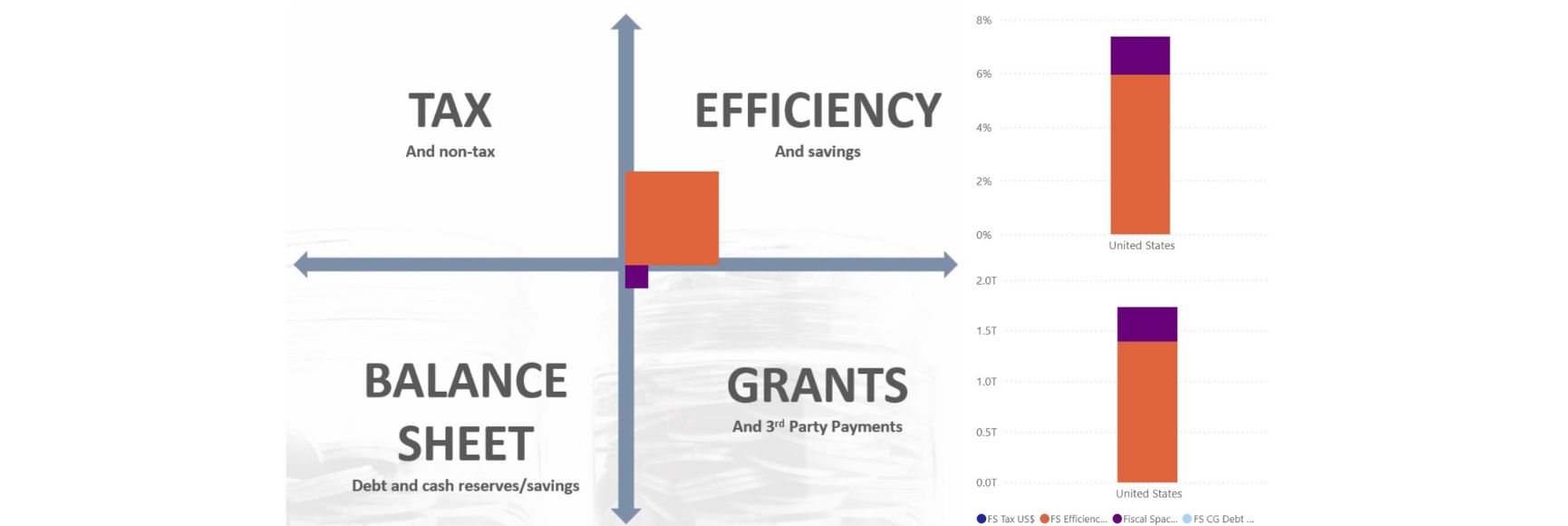Extracts from a Project Report by Author on ‘Budgetary Reforms in South Asia’ Sponsored by the Indian Council of Social Science Research
Posted by Udaya Pant
Afghanistan
As a result of the Making Budget Work (MBW) and Making Budget and Air Work (MBAW) projects, budgets are now prepared on time and increasingly reflect the priorities of the Afghan National Development Strategy (ANDS) and the provincial needs. Budget officers from the project assist the line ministries in formulating and submitting the budget proposals on time and in accordance with national and ministerial policies and priorities.
Program and provincial budgeting were introduced in Afghanistan from fiscal year 2007. Progress on these has been slow, yet steady. The provincial budgeting pilot was to cover all 34 provinces by 2011. The program budgeting pilot covered 17 ministries by 2011. Each Ministry has formed a Program Budget Implementation Team, and training sessions on program budgeting have been delivered to all of these teams. The program and provincial budgeting pilots have improved budget formulation processes, increased transparency in government expenditures and ensured the foundation for increased inclusion of the provinces in the national budget formulation and implementation process, increasing equity in the distribution of resources across the country.
Afghanistan has focused on strengthening the National Budget process, a central mechanism for government decision making on allocation of domestic and external resources on the basis of priorities and programs identified in the ANDS.
Bangladesh
Following the new legislation “Public Moneys and Budget Management Act, 2009”, the budget is now presented on time (before March) to the legislature. As part of the macro-modeling activity, a Medium Term Macro-economic Framework (MTMF) including three scenarios (e.g. base, high, and low case scenarios) have been developed.
In order to increase efficiency and effectiveness of public expenditure, the government has introduced the MTBF to replace the existing budgetary procedure.
The ongoing PFM reform has concentrated on building systems and institutional capacity in all these areas. In particular the Medium Term Budgetary Framework (MTBF) forms an important bridge between the national policy framework and the operational plans of the line ministries.
The Integrated Budgeting and Accounting System (iBAS) stores the data on a central database and all entry and reporting is accessed via a single common user interface.
Bhutan
Under the strengthening PFM project, funded by the Asian Development Bank (ADB); the following important tasks have been undertaken to improve PFM in Bhutan:
The revised budget manual attempts to ensure that the budget process is consistent with the public finance act (PFA) and that it supports a linkage between the budget process and the five-year Plan. The Multi-Year Rolling Budget (MYRB) Process guides the staff involved in the budget process to ensure that it responds to the requirements of the MOF. The budget manual also supports budgetary organizations in developing their own internal budget process as a way to strengthen the management of funds. The central government has adopted a formula for capital grants to dzongkhags and gewogs (local government entities) which is based on the size of the population, poverty incidence, and the size of the territory.
For effective Treasury management, three main areas have been focused on, namely, a model on cash-flow forecasting, a report with guidelines on consolidation of treasury accounts, and a concept paper for the development of a capital market through Treasury Bills. The guideline on consolidation of government accounts was drafted to affirm MOF's comprehensive and effective control of budgetary matters and to make its requirements clear.
MOF has upgraded the Budget and Accounting System (BAS) by adopting an Integrated Financial Management System designed to support its process of budgetary and expenditure reforms.
India
The system of having the Parliamentary Standing Committees examining the Demands submitted by the line ministries has become an integral part of the scrutiny of the budget demands by the legislature. This has been mutually beneficial to both the legislature and the line ministries. The regulatory framework through Fiscal Responsibility and Budget Management Act, 2005 is available.
Outputs and Outcomes are now reported as a reform in the previous performance budgeting system. Budget execution process has also been reformed and various controls have been put into place for ensuring that the budget execution results into the achievement of objectives. This system was given a nomenclature of a modified cash management system and aimed at evening out the expenditure within the financial year. The Modified Cash Flow System for certain Demands for Grants has been introduced, in which the Ministries are required to prepare a monthly expenditure plan, and quarterly ceilings are provided which require revalidation at the end of each quarter. Regular budget execution reporting is in place.
An information system has been developed for tracking all central transfers to the executing provinces and other agencies. Linkages have been developed in each ministry to ensure that the Classification Systems and Chart of Accounts are able to provide Scheme wise information system. Tracking of sanctions through a central server is done through a unique Sanction identification to track flow of funds. Complete details of funds being available is there with the Ministry of Finance and finally initiating the actual transfer of money when actual expenditures are incurred by leveraging the developments in the banking system. This would help in saving a lot on the government borrowings by utilizing this money which is unproductively parked in the transmission channel.
Maldives
The government of Maldives is trying to align its budgetary system with the overall objectives of Public Financial Management and maintaining an efficient system of Financial Administration; through donor assistance. The budgetary priorities are being attempted to be decided on the basis of government’s agenda for taking various works and allocations are made accordingly. The focus of the budgetary and financial management systems is to improve program delivery of the government and also in establishing the expenditure priorities of the government. There is an emphasis on capacity building in these areas and government is trying to develop professionalism in these areas.
Maldives is also trying to strengthen its budget preparation and finalization process by developing an efficient system of forecasting the requirements for the next financial years depending upon the past trends and also on the basis of specific items to be taken in the subsequent financial year. The budget management is now being considered as one of the most important discipline because it has a major impact on the overall financial management in the country.
Nepal
In Nepal, democracy government initiated the economic strategy of maximizing public participation by promoting the role of the government from a controller to facilitator for the economic development of the country. Liberal and market oriented economic policy is followed against the inward looking and controlled economic policy for the attainment of sustainable higher growth rate in non-agricultural sector.
The 2008 PEFA Assessment envisaged the development of a programmatic approach to PFMRP using the platform approach through a well-sequenced sector strategy. The new Constitution of Nepal is expected to be adopted and the country would be in the process of defining the federal arrangements for the provincial states and local governments. The approach facilitates a change management process to enable genuine leadership of the PFMRP through achieving gradual and manageable steps. It supports a holistic government-wide approach encompassing both the institutional and technical aspects of reform.
GON have taken several initiatives with the donor support and national budget in this area. Some of the examples are the Budget Management System; IT based Financial Management Information System, Districts Expenditure Control System, Treasury Single Account, computerized Revenue Accounting System, Computerized Government Accounting System to map various transactions through the FMIS, centrally in the FCGO, Procurement System and e-tendering, Health Sector monitoring and financial information system, IPSAS, GFS 2001.
Pakistan
Various reforms in the budgetary systems and, in general, public resource management processes are underway. These have or are changing the systems in which government resources are allocated to policy objectives creating opportunities for gender responsive budgeting.
Over the past five years important changes have been adopted in public resource management systems in the country. Some of the changes were brought in to deal with pressures created by the environment in which policy making was taking place while others can be linked to the changes in international practice. The reforms have changed the way in which budgets are put together, executed, accounted for and reviewed. The changes are not confined to the preparation of budget documents alone but span the whole range of processes leading up to and following on from preparation of budget documents.
Planning and budgeting, which used to be two disparate domains, are being gradually integrated progressively at a functional level; the institutional arrangement remains divided in different agencies. Local governments unlike the federal and provincial levels have a unified finance and planning office. At the same time there has been an effort to abandon formal and rigid time bound macro-level planning.
Under the Medium Term Budgetary Framework (Federal) developing medium-term budgetary frameworks have been attempted. Revenues and expenditures have been projected over a medium-term horizon. Planning within the resource envelope is bringing in prioritization and consideration for efficiency, economy and value for money. The MTBF process requires ministries to lay out policy priorities based on a ministerial review, develop specific indicators, compute resource allocations for achieving them and lay down the manners in which they will be achieved.
Project for Improving Financial Reporting and Audit (PIFRA) contains a large number of reforms affecting the budgeting process. It is a project aiming to streamline financial accounting and reporting. The public sector accounts maintained on a cash basis will now be formulated on a modified cash basis.
Decentralization and Creation of Local Governments envisages fiscal decentralization efforts.
Sri Lanka
The government of Sri Lanka has developed a Medium-Term Budgetary Framework for carrying out programs and policies of the Government and to bring out reforms in budgetary process and overall system of Public Expenditure Management in the country. An integrated treasury management system (ITMIS) has also been developed. for: Budget Preparation & Allocations; Treasury Operations; Cash Inflow (Revenues) and Outflow (expenditure); Cash Management and Reporting; Accounts Management and Reporting; Debt Management; Asset Management Budget Preparation and Finalization; Transfers and additional allocations; Supplementary estimates. ITMIS offers interfaces for payments, revenue collections, recordings and reconciliation, debt data management, payroll processing, pensions management, accounts management; and reporting.
Evaluation of Budgetary Reforms:
All countries have been aiming at world class budgetary systems in place through the recent reforms. However, in some cases, action is an attempt to ‘push’ reforms to please the donors. This creates a possible internalization of the skills but dependence on donors. In several countries of South Asia, the donor agenda dominates the national agenda for reforms.
Performance budgeting initiatives are in their nascent stage wherever they are being tried out. Except India, an outcome-oriented budgeting is more or less at a conceptual stage in all countries. The people and the politicians now have a better appreciation of budgeting and PF reforms and issues like economic efficiency and effectiveness. Though, the countries studied have varied capacity maturity levels, intents, systems; and practices, one thing is sure: the performance management and outcome-oriented budgeting is here to stay and get better appreciation in all countries. In all countries of the region, budgets are virement-friendly; it interferes with the authority and responsibility of the policy makers to have liberal virement regime.
Several reviews by IMF, World Bank and other donors found that the aggregate budget management in place; but observed the capacity constraints and need to wider reforms. Gender Budgeting is adopted as a concept but it has implementation weaknesses and problems of capacity and intents.
The initiatives to improve the PFM systems and budgeting in recent years have been good starting points. However, the intended reforms did not bring the expected outcomes due to capacity and implementation issues. None of the countries have sufficiently worked on the Medium Term Budgeting Frameworks to supplement the MTEF. All countries, including India, have scored poorly in the PEFA assessments, on indicators relating to policy based budget and medium-term budget framework.
Note: The posts on the IMF PFM Blog should not be reported as representing the views of the IMF. The views expressed are those of the authors and do not necessarily represent those of the IMF or IMF policy.





